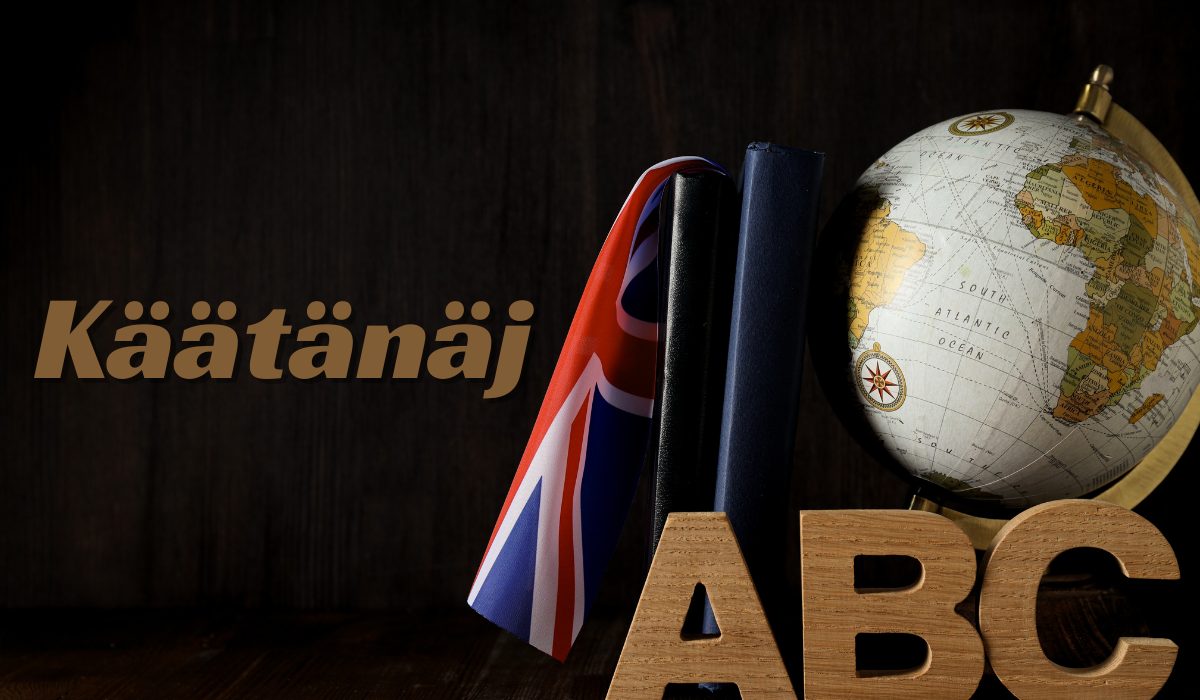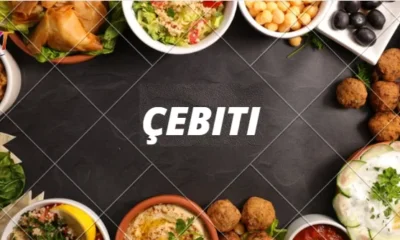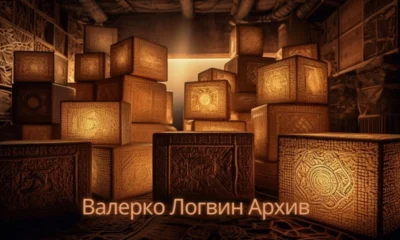Business
Understanding Käätänäj: A Comprehensive Guide
Published
1 month agoon
By
Michael
Käätänäj is a term that might sound unfamiliar to many, but it carries significant cultural, spiritual, and historical weight. While the term itself may not be universally known, its essence and influence resonate across different cultures and regions. In this guide, we’ll dive deep into the world of Käätänäj, exploring its origins, meanings, and relevance in today’s society.
What is Käätänäj?
Definition and Meaning
Käätänäj is a term that embodies a complex set of traditions, beliefs, and practices that have been passed down through generations. The word itself may have different interpretations depending on the region and context in which it is used, but at its core, Käätänäj represents a way of life that connects individuals with their cultural roots.
Historical Background
The history of Käätänäj is rich and varied, with origins that can be traced back to ancient times. Over centuries, it has evolved, adapting to the changing societal landscapes while maintaining its core values. Understanding its history helps in appreciating the depth of its significance in today’s world.
The Cultural Significance of Käätänäj
Roots in Tradition
Käätänäj is deeply rooted in tradition, often serving as a bridge between past and present. It plays a crucial role in preserving cultural identity, especially in communities that value heritage and ancestral wisdom.
Influence on Modern Culture
While Käätänäj is steeped in tradition, it has also found its way into modern culture, influencing various aspects of contemporary life. From festivals to everyday practices, Käätänäj remains relevant, offering a unique blend of the old and new.
Käätänäj in Different Regions
Variations Across Countries
Käätänäj is not confined to a single region; it has different interpretations and practices across various countries. Each culture adds its unique touch to Käätänäj, creating a diverse tapestry of traditions that enrich its overall meaning.
Unique Practices and Rituals
Different regions have their unique ways of celebrating Käätänäj, with rituals that reflect local beliefs and customs. These practices offer a glimpse into the diverse ways in which Käätänäj is honored around the world.
The Evolution of Käätänäj
Ancient to Modern Times
Käätänäj has undergone significant transformations from ancient times to the present day. As societies evolved, so did the practices and perceptions of Käätänäj, allowing it to adapt to new environments while staying true to its roots.
Changes in Perception and Practice
Over time, the perception of Käätänäj has shifted, with modern interpretations often differing from traditional ones. This evolution reflects broader societal changes and the ongoing dialogue between tradition and innovation.
How Käätänäj Impacts Daily Life
Role in Social Gatherings
Käätänäj plays a vital role in social gatherings, serving as a means of bringing people together. Whether it’s a small family event or a large community festival, Käätänäj fosters a sense of belonging and shared identity.
Presence in Festivals and Celebrations
Festivals and celebrations are where Käätänäj truly shines. These events offer a platform for expressing cultural pride and honoring the traditions that Käätänäj represents. They are not just about the past but also about creating new memories and experiences.
Symbolism Behind Käätänäj
What Käätänäj Represents
Käätänäj is more than just a set of practices; it symbolizes deeper values such as unity, continuity, and respect for the past. It serves as a reminder of the importance of cultural heritage and the need to preserve it for future generations.
Associated Symbols and Icons
Various symbols and icons are associated with Käätänäj, each carrying its own meaning and significance. These elements help in visualizing the abstract concepts that Käätänäj embodies, making them more accessible to those who participate in its traditions.
The Spiritual Aspects of Käätänäj
Connection with Beliefs and Religions
Käätänäj is closely linked with spiritual beliefs and religious practices. For many, it is a way of connecting with the divine, offering a path to spiritual fulfillment and understanding.
Rituals and Ceremonies
Rituals and ceremonies are an integral part of Käätänäj, providing a structured way of expressing spiritual beliefs. These practices often involve specific rites that have been performed for generations, adding to the rich tapestry of Käätänäj traditions.
Käätänäj in Art and Literature
Representation in Visual Arts
Käätänäj has found expression in various forms of visual arts, from traditional paintings to modern installations. Artists use Käätänäj as a theme to explore cultural identity and the relationship between the past and present.
References in Literary Works
Literature has also been a medium through which Käätänäj is explored and celebrated. Writers use stories, poems, and essays to delve into the meaning of Käätänäj, offering new perspectives on its significance.
Modern Interpretations of Käätänäj
Contemporary Practices
In today’s world, Käätänäj is practiced in ways that reflect contemporary values and lifestyles. While the core principles remain, the methods of expression have evolved, allowing Käätänäj to stay relevant in a rapidly changing society.
Influence on Pop Culture
Käätänäj has even made its way into pop culture, influencing everything from music to fashion. This reflects the ongoing relevance of Käätänäj and its ability to adapt to new cultural landscapes.
Challenges Facing Käätänäj Today
Preservation of Tradition
One of the biggest challenges Käätänäj faces today is the preservation of its traditions. As the world becomes more globalized, there is a risk of losing the unique practices that define Käätänäj.
Impact of Globalization
Globalization has both positive and negative effects on Käätänäj. While it allows for the spread and recognition of Käätänäj beyond its traditional borders, it also poses a threat to its authenticity and continuity.
The Future of Käätänäj
Trends and Predictions
The future of Käätänäj is shaped by current trends and predictions. As more people become interested in cultural preservation, Käätänäj is likely to see a resurgence in popularity, albeit in new forms.
How it Might Evolve
Käätänäj is not static; it will continue to evolve as society changes. The key will be finding a balance between honoring traditional practices and embracing new ways of expression.
How to Experience Käätänäj
Participating in Events
Experiencing Käätänäj firsthand is the best way to understand its significance. By participating in events and ceremonies, one can gain a deeper appreciation for the traditions and values that Käätänäj represents.
Learning and Understanding
For those interested in Käätänäj, learning about its history and practices is essential. This involves not only studying its origins but also engaging with the communities that keep Käätänäj alive.
You may like
Business
Acúmen In Leadership: How Effective Leaders Utilize Their Keen Insight
Published
6 months agoon
August 15, 2024By
Michael
In the ever-evolving landscape of leadership, acumen—the ability to make quick, insightful decisions—is an invaluable trait. Whether in business, politics, or any other domain, leaders who possess sharp acumen are often the ones who navigate challenges with finesse, inspire their teams, and drive their organizations to success. This article delves into the concept of acumen in leadership, exploring how effective leaders utilize this keen insight to make impactful decisions and lead their teams toward greater achievements.
The Essence of Leadership Acumen
Leadership acumen refers to the sharpness of mind that allows leaders to understand complex situations quickly and make well-informed decisions. It’s a blend of intuition, experience, and strategic thinking that enables leaders to foresee challenges, capitalize on opportunities, and guide their organizations through uncertainty. This insight goes beyond basic intelligence; it’s about seeing the bigger picture and understanding the nuances of different scenarios.
Acumen in leadership is not just about making decisions; it’s about making the right decisions at the right time. Leaders with strong acumen can anticipate potential outcomes, weigh the pros and cons, and act decisively. This ability is what often sets great leaders apart from the rest. In high-pressure situations, where time is of the essence, acumen can be the difference between success and failure.
Key Traits of Leaders with Sharp Acumen
Leaders who exhibit sharp acumen share several key traits that allow them to excel. First, they possess a deep understanding of their field or industry, which enables them to make informed decisions. This expertise is coupled with an innate curiosity and a desire to continuously learn and adapt. Such leaders are also highly observant, paying close attention to details that others might overlook.
Another essential trait is emotional intelligence. Leaders with acumen are adept at reading people and situations, understanding the motivations and emotions of others, and using this insight to navigate complex interpersonal dynamics. This emotional insight allows them to build strong relationships and foster a positive organizational culture.
Finally, leaders with sharp acumen are decisive. They have the confidence to make tough decisions quickly, even when the information available is incomplete or uncertain. This decisiveness is often rooted in a deep sense of purpose and a clear vision for the future.
Developing Leadership Acumen
While some individuals may naturally possess sharp acumen, it is a skill that can be developed and refined over time. One of the most effective ways to enhance leadership acumen is through continuous learning. Leaders who invest in their education, whether through formal training, reading, or seeking mentorship, are better equipped to handle the complexities of their roles.
Another important aspect of developing acumen is gaining diverse experiences. Leaders who expose themselves to different challenges, industries, and cultures broaden their perspectives and develop the ability to think critically and adapt to new situations. This diversity of experience contributes to a more rounded and insightful approach to leadership.
Reflection is also crucial in developing acumen. Leaders who regularly reflect on their decisions and experiences can identify patterns, learn from their mistakes, and refine their decision-making processes. This introspection helps them to become more self-aware and attuned to the subtleties of different situations.
The Role of Acumen in Decision-Making
Acumen plays a critical role in the decision-making process of effective leaders. In today’s fast-paced and complex world, leaders are often required to make decisions quickly, sometimes with limited information. Acumen allows leaders to cut through the noise, identify the most relevant factors, and make decisions that are aligned with their long-term goals.
A leader’s acumen is also crucial in assessing risks and opportunities. Leaders with sharp acumen can evaluate the potential impact of different choices and select the course of action that offers the greatest benefit while minimizing risks. This ability to balance risk and reward is essential for steering organizations toward sustainable success.
Furthermore, acumen helps leaders to remain adaptable. In a rapidly changing environment, the ability to pivot and adjust strategies is key to maintaining relevance and competitiveness. Leaders with strong acumen can anticipate changes, understand their implications, and adapt their plans accordingly.
Acumen and Emotional Intelligence
Emotional intelligence (EQ) and acumen are closely related in effective leadership. EQ refers to the ability to understand and manage one’s own emotions and those of others. When combined with acumen, emotional intelligence allows leaders to make decisions that are not only logical but also considerate of the human element.
Leaders with high EQ and acumen can navigate complex interpersonal dynamics, mediate conflicts, and build strong, cohesive teams. They understand that leadership is not just about strategy but also about people. By recognizing the emotional undercurrents within their teams, these leaders can foster a positive work environment that encourages collaboration and innovation.
Additionally, emotional intelligence enhances a leader’s ability to communicate effectively. Leaders with high EQ can articulate their vision clearly, inspire their teams, and gain buy-in from stakeholders. This effective communication is often a key factor in the successful implementation of strategies.
Case Studies: Leaders Who Exemplify Acumen
Throughout history, there have been numerous leaders who have demonstrated exceptional acumen in their leadership. One such example is Steve Jobs, the co-founder of Apple Inc. Jobs was known for his visionary thinking, ability to anticipate market trends, and his keen sense of what consumers wanted—even before they knew it themselves. His acumen was instrumental in Apple’s rise to become one of the most valuable companies in the world.
Another example is Angela Merkel, the former Chancellor of Germany. Merkel’s leadership was characterized by her calm, rational decision-making and her ability to navigate complex political landscapes. Her acumen in understanding both the domestic and international implications of her decisions helped Germany maintain its position as a leading global power during her tenure.
These case studies illustrate how acumen, combined with other leadership qualities, can lead to extraordinary success. They serve as inspiration for aspiring leaders who wish to develop their own acumen and lead with insight and effectiveness.
The Impact of Acumen on Team Dynamics
Leadership acumen has a profound impact on team dynamics. Leaders with sharp acumen can create an environment where team members feel valued, understood, and motivated. They can identify the strengths and weaknesses of their team members and assign tasks that play to each person’s strengths, thereby maximizing productivity and engagement.
Moreover, leaders with acumen are skilled at managing conflicts within their teams. They can recognize potential issues before they escalate and take proactive steps to address them. By fostering open communication and encouraging collaboration, these leaders create a positive team culture that supports innovation and high performance.
The influence of acumen on team dynamics also extends to decision-making within the team. Leaders who involve their teams in the decision-making process can tap into a wider range of perspectives and ideas, leading to more well-rounded and effective decisions. This collaborative approach not only enhances the quality of decisions but also increases team buy-in and commitment to the chosen course of action.
Strategies to Enhance Leadership Acumen
Enhancing leadership acumen requires a deliberate and ongoing effort. One effective strategy is to seek out challenging experiences that push leaders out of their comfort zones. These experiences, whether in the form of new projects, roles, or industries, force leaders to think critically and adapt to new situations, thereby sharpening their acumen.
Another strategy is to cultivate a habit of continuous learning. Leaders who stay informed about the latest trends, technologies, and developments in their field are better equipped to make insightful decisions. This learning can take many forms, from reading industry publications to attending conferences and networking with other leaders.
Mentorship is also a valuable tool for developing acumen. By seeking guidance from more experienced leaders, individuals can gain insights into effective decision-making and leadership practices. Mentors can provide valuable feedback, challenge assumptions, and offer different perspectives that help mentees refine their acumen.
Challenges in Cultivating Leadership Acumen
Despite its importance, cultivating leadership acumen is not without its challenges. One of the primary obstacles is the fast pace of change in today’s world. With new technologies, shifting market dynamics, and evolving consumer preferences, leaders must constantly update their knowledge and adapt their strategies to stay ahead.
Another challenge is the risk of overconfidence. Leaders with strong acumen may become overly reliant on their instincts and fail to seek input from others. This can lead to blind spots and poor decision-making. To avoid this, leaders must remain humble, open to feedback, and willing to challenge their own assumptions.
Additionally, the pressure to make quick decisions can sometimes lead to burnout. Leaders who are constantly required to process large amounts of information and make high-stakes decisions may experience stress and fatigue, which can impair their acumen. It’s important for leaders to prioritize self-care and manage their workload to maintain their sharpness over the long term.
The Future of Leadership: Acumen in the Digital Age
As we move further into the digital age, the role of acumen in leadership is becoming increasingly important. The rapid pace of technological advancement, coupled with the complexities of the global economy, requires leaders to be more insightful and adaptable than ever before.
Digital tools and data analytics are transforming the way leaders make decisions. Those with strong acumen can leverage these tools to gain deeper insights into their organizations and markets, enabling them to make more informed and strategic decisions. However, the human element of leadership remains crucial. While technology can provide valuable information, it is the leader’s acumen that determines how that information is interpreted and applied.
In the future, successful leaders will be those who can combine their acumen with technological savvy, emotional intelligence, and a deep understanding of the human aspects of leadership. This blend of skills will enable them to navigate the complexities of the modern world and lead their organizations to success.
FAQs
1. What is leadership acumen?
Leadership acumen refers to the ability of a leader to make quick, insightful decisions by understanding complex situations and anticipating outcomes.
2. How can one develop leadership acumen?
Leadership acumen can be developed through continuous learning, gaining diverse experiences, reflecting on decisions, and seeking mentorship.
3. Why is acumen important in leadership?
Acumen is crucial in leadership because it enables leaders to make well-informed decisions, anticipate challenges, and capitalize on opportunities.
4. How does emotional intelligence relate to acumen?
Emotional intelligence enhances a leader’s acumen by allowing them to understand and manage interpersonal dynamics effectively, leading to better decision-making.
5. Can leadership acumen be measured?
While leadership acumen is challenging to quantify, it can be assessed through a leader’s ability to make effective decisions, navigate challenges, and lead successfully.
6. What role does acumen play in decision-making?
Acumen allows leaders to cut through complexity, identify the most relevant factors, and make decisions that align with their goals and values.
7. Are there any risks associated with having too much acumen?
Overreliance on acumen can lead to overconfidence and blind spots. Leaders must balance their acumen with humility and openness to feedback.
8. How does acumen impact team dynamics?
Acumen helps leaders build strong teams by understanding individual strengths, managing conflicts, and fostering a positive, collaborative environment.
9. Can acumen be learned, or is it innate?
While some individuals may naturally possess acumen, it is a skill that can be developed and refined through experience, learning, and reflection.
10. What is the future of leadership acumen in the digital age?
In the digital age, leadership acumen will be increasingly important as leaders must navigate complex technological advancements while maintaining a human-centered approach.
Conclusion
Leadership acumen is a critical trait that distinguishes effective leaders from the rest. It enables leaders to make quick, informed decisions, anticipate challenges, and guide their organizations through complex situations. While some may naturally possess sharp acumen, it is a skill that can be developed through continuous learning, diverse experiences, and reflective practices.
In the digital age, the importance of leadership acumen is only set to increase. As technology continues to evolve and the global landscape becomes more interconnected, leaders with strong acumen will be better equipped to navigate these challenges and lead their organizations to success. However, it’s essential for leaders to balance their acumen with emotional intelligence, humility, and a commitment to lifelong learning.
By cultivating leadership acumen, aspiring leaders can enhance their ability to make impactful decisions, foster positive team dynamics, and drive sustainable success in an increasingly complex world.
Business
Madskills-agency.net: Your Guide to Government Services
Published
6 months agoon
August 12, 2024By
Michael
Introduction to madskills-agency.net
Navigating the maze of government services can often feel overwhelming. With countless forms, regulations, and requirements to sift through, it’s easy to get lost in the process. Enter Madskills-Agency.net a dedicated partner designed to simplify your experience with these essential services. Whether you’re seeking assistance for personal needs or business-related inquiries, madskills-agency.net stands out as a beacon of support. This guide will walk you through everything you need to know about their offerings and how they can make your life easier while ensuring compliance with government protocols. Let’s dive into what makes Madskills Agency your go-to resource for all things related to government services.
The Importance of Government Services
Government services play a critical role in maintaining the well-being of society. They provide essential support to citizens, ensuring access to healthcare, education, and public safety.
These services create infrastructure that allows communities to thrive. Roads, parks, and public transportation systems are vital for everyday life. Without them, mobility would be severely hindered.
Moreover, government assistance programs help those in need by providing financial aid and resources. This support fosters economic stability and promotes equality among community members.
Furthermore, government services often facilitate civic engagement by offering platforms for citizens to voice their concerns. This connection between governing bodies and residents is crucial for fostering trust.
Effective government services improve quality of life while contributing to social cohesion. The impact can be seen across various sectors as they work together for collective progress.
Top Government Services Offered by Madskills Agency
Madskills Agency stands out by offering a variety of essential government services tailored to meet community needs. From business licensing assistance to grant application support, they help citizens navigate the often complex bureaucratic landscape.
Their team specializes in providing tax preparation guidance, ensuring individuals and businesses maximize their returns while staying compliant with regulations. They also offer workforce development programs aimed at enhancing job skills for local residents.
For those seeking housing assistance, Madskills Agency provides resources for affordable housing options and rental applications. Additionally, their small business advisory services empower entrepreneurs with tools needed for success in competitive markets.
Each service is designed with user-friendliness in mind, making it easier than ever to access critical government support. Whether you’re a first-time applicant or looking to expand your existing knowledge, Madskills Agency has you covered every step of the way.
How to Access and Utilize Madskills Agency’s Services
Accessing Madskills Agency’s services is straightforward. Visit madskills-agency.net to explore the wide range of offerings available. The user-friendly interface makes navigation a breeze.
Once on the site, start by identifying your specific needs. Whether it’s assistance with grants or guidance on regulatory compliance, each service is clearly outlined.
For personalized support, consider reaching out through their contact form or customer service hotline. The team at Madskills is dedicated to helping you find exactly what you need.
After establishing contact, gather any necessary documentation that might be required for your inquiry. This will streamline the process and ensure prompt assistance.
Utilizing these services effectively means staying engaged throughout your journey. Regular follow-ups can help maintain momentum and clarify any questions along the way.
Success Stories: Real-life Examples of People Benefitting from Madskills Agency
Madskills Agency has transformed lives through its government services. Take Sarah, for instance. Struggling to navigate the complexities of small business loans, she turned to madskills-agency.net for assistance. With their expert guidance, she secured funding and launched her bakery.
Then there’s Mark, a veteran seeking educational benefits. He found the process daunting until he reached out to Madskills Agency. Their team helped him access programs tailored specifically for veterans, enabling him to pursue his dream degree.
Another remarkable story is that of Linda, a single mother needing housing support. After connecting with Madskills Agency, she was able to find affordable housing options in her area and gain stability for her family.
These individuals represent just a fraction of those who have experienced positive outcomes thanks to the dedicated services offered at madskills-agency.net. Each success story highlights not only personal triumph but also the agency’s commitment to empowering community members through effective solutions.
Frequently Asked Questions about Madskills Agency
Curious about Madskills Agency? You’re not alone. Many people have questions before diving into their services.
One common inquiry is about the types of government services offered. From assistance with permits to navigating local regulations, there’s a wide spectrum available.
Another frequent question revolves around costs. Potential clients want to know if these services are budget-friendly and how they compare to other providers in the market.
People also often ask about the application process. Understanding how to easily access various programs can be crucial for many individuals and businesses alike.
Clients frequently wonder about success rates. Hearing real-life testimonials helps build trust and gives a clearer picture of what to expect when working with madskills-agency.net.
Conclusion: Why Choose Madskills Agency for Government Services?
When it comes to navigating government services, Madskills Agency stands out as a reliable partner. Their expertise simplifies complex processes, making them accessible to everyone. With a wide range of services tailored to meet diverse needs, they cater to individuals and businesses alike.
Choosing Madskills Agency means choosing efficiency and effectiveness. Their commitment to client satisfaction is evident in every interaction. The team’s knowledge ensures you receive the best possible guidance through various governmental frameworks.
With numerous success stories affirming their impact, it’s clear that many have found value in what they offer. Whether you’re seeking assistance with permits, licenses, or any other service, you’ll find that madskills-agency.net has the tools and resources necessary for successful navigation.
Business
Money6X Real Estate: Revolutionizing Property Investment
Published
7 months agoon
July 29, 2024By
Michael
In the ever-evolving landscape of real estate investment, Money6X Real Estate has emerged as a trailblazer, offering innovative solutions and opportunities for investors worldwide. By leveraging advanced technology and a customer-centric approach, Money6X is transforming the way individuals and businesses approach property investment, making it more accessible, efficient, and profitable.
The Vision Behind Money6X Real Estate
Founded on the principles of transparency, efficiency, and innovation, Money6X Real Estate aims to democratize the real estate market. The company’s vision is to create a platform where investors, regardless of their experience level, can easily navigate the complexities of property investment. By providing cutting-edge tools and resources, Money6X empowers its clients to make informed decisions and maximize their returns.
Key Features and Services
Advanced Analytics and Market Insights
One of the standout features of Money6X Real Estate is its use of advanced analytics and market insights. The platform harnesses the power of big data and artificial intelligence to provide investors with real-time information on market trends, property values, and investment opportunities. This data-driven approach ensures that clients have access to accurate and up-to-date information, enabling them to make sound investment decisions.
User-Friendly Interface
Money6X Real Estate is designed with the user in mind. The platform boasts a user-friendly interface that simplifies the investment process. From property search and analysis to transaction management, every aspect of the platform is intuitive and easy to navigate. This user-centric design makes it accessible to both novice and experienced investors.
Diverse Investment Options
Recognizing that investors have varying goals and risk appetites, Money6X Real Estate offers a diverse range of investment options. Whether clients are interested in residential properties, commercial real estate, or land investments, the platform provides a wide array of opportunities. This diversity allows investors to build a well-rounded and resilient portfolio.
Robust Support and Resources
In addition to its technological capabilities, Money6X Real Estate prides itself on its robust support and resources. The platform offers a wealth of educational materials, including webinars, articles, and guides, to help investors stay informed and confident in their investment choices. Furthermore, Money6X’s team of experienced professionals is always available to provide personalized support and advice.
The Technology Behind Money6X Real Estate
At the core of Money6X Real Estate’s success is its commitment to leveraging technology to enhance the investment experience. The platform integrates several advanced technologies to deliver exceptional value to its users:
Blockchain for Security and Transparency
Money6X Real Estate utilizes blockchain technology to ensure security and transparency in all transactions. Blockchain’s immutable ledger provides a secure and transparent record of all property transactions, reducing the risk of fraud and enhancing trust among investors.
AI-Driven Property Valuation
The platform’s AI-driven property valuation tool is a game-changer for investors. By analyzing a vast amount of data, including historical property values, market trends, and economic indicators, the AI tool provides accurate and reliable property valuations. This technology helps investors identify undervalued properties and make strategic investment decisions.
Virtual Reality Tours
To enhance the property viewing experience, Money6X Real Estate offers virtual reality (VR) tours. These immersive tours allow investors to explore properties from the comfort of their homes, providing a realistic and detailed view of potential investments. VR tours save time and resources while ensuring that investors can thoroughly evaluate properties before making a purchase.
Success Stories
Money6X Real Estate has already made a significant impact on the real estate investment landscape, with numerous success stories to its credit. Investors from around the world have benefited from the platform’s innovative approach, achieving impressive returns on their investments.
Case Study: Residential Property Investment
A recent case study highlights the success of a residential property investment facilitated by Money6X Real Estate. An investor used the platform’s advanced analytics and AI-driven property valuation tools to identify a promising residential property in a growing market. With the support of Money6X’s team, the investor successfully acquired the property and saw a substantial increase in its value within a year, resulting in a lucrative return on investment.
Case Study: Commercial Real Estate Portfolio
Another success story involves a commercial real estate portfolio. An experienced investor leveraged Money6X Real Estate’s diverse investment options and market insights to build a robust portfolio of commercial properties. The platform’s data-driven approach and VR tours enabled the investor to make informed decisions and secure high-yield properties. The portfolio’s performance has consistently exceeded expectations, demonstrating the effectiveness of Money6X’s approach.
Conclusion
Money6X Real Estate is at the forefront of revolutionizing property investment. By combining advanced technology with a customer-centric approach, the platform is making real estate investment more accessible, efficient, and profitable for investors of all levels. With its commitment to transparency, innovation, and support, Money6X Real Estate is poised to continue its rapid growth and redefine the future of real estate investment.
Whether you are a seasoned investor or just starting your journey in real estate, Money6X Real Estate offers the tools and resources you need to succeed. Explore the platform today and discover how Money6X can help you achieve your investment goals.
Trending
-

 Lifestyle8 months ago
Lifestyle8 months agoExploring the World of Çebiti: A Traditional Turkish Delight
-

 Lifestyle7 months ago
Lifestyle7 months agoChelsea Acton: Expert Parenting Advice and Impactful Advocacy
-

 Fashion8 months ago
Fashion8 months agoВАЛЕРКО ЛОГВИН АРХИВ: Preserving the Past, Inspiring the Future
-

 Business8 months ago
Business8 months agoUnveiling RivenisNet: Revolutionizing Connectivity for Tomorrow
-

 Celebrity8 months ago
Celebrity8 months agoWho is Andre Hakkak’s Wife and What is Her Background?
-

 Business7 months ago
Business7 months agoThe Power of Преводсч: Unlocking Global Communication
-

 Health8 months ago
Health8 months agoAlevemente: The Art of Mindful Eating
-

 Tech8 months ago
Tech8 months agoOntpresscom Fresh Updates
